首页 > 心得体会 > 学习材料 / 正文
Observer-Based,Control,for,a,Cable-Driven,Aerial,Manipulator,under,Lumped,Disturbances
2023-03-19 10:20:11 ℃Li Ding,Yong Yaoand Rui Ma
College of Mechanical Engineering,Jiangsu University of Technology,Changzhou,213000,China
ABSTRACT With the increasing demand for interactive aerial operations,the application of aerial manipulators is becoming more promising.However,there are a few critical problems on how to improve the energetic efficiency and pose control of the aerial manipulator for practical application.In this paper,a novel cable-driven aerial manipulator used for remote water sampling is proposed and then its rigid-flexible coupling dynamics model is constructed which takes joint flexibility into account.To achieve high precision joint position tracking under lumped disturbances,a newly controller,which consists of three parts:linear extended state observer,adaptive super-twisting strategy,and fractional-order nonsingular terminal sliding mode control,is proposed.The linear extended state observer is adopted to approximate unmeasured states and unknown lumped disturbances and achieve model-free control structure.The adaptive super-twisting strategy and fractional-order nonsingular terminal sliding mode control are combined together to achieve good control performance and counteract chattering problem.The Lyapunov method is utilized to prove the overall stability and convergence of the system.Lastly,various visualization simulations and ground experiments are conducted,verifying the effectiveness of our strategy,and all outcomes demonstrate its superiorities over the existing control strategies.
KEYWORDS Aerial manipulator; cable-driven; adaptive super-twisting; linear extend state observer; fractional-order nonsingular terminal sliding mode
Nomenclature
MInertia matrix
CCoriolis and centrifugal matrix
GGravitational force vector
JInertia matrix of motors
DDamping matrix of motors
KsJoint stiffness matrix
KdJoint damping matrix
qAngular position vector of links
θAngular position vector of motors
uVector of motor torque
τextDisturbance torque vector
NLumped disturbances
Constant diagonal gain matrix
LObserver gain matrix
zEstimation of system states
DαFractional derivative and integration
ω0Observer bandwidth
ε1Estimation error of LESO
Recently,unmanned aerial vehicles (UAVs),as a special robotic system,have been widely used in various aerial applications including aerial photography [1],mapping [2] and emergency search[3]benefiting from their high maneuverability and low cost.Unfortunately,most existing UAVs can only perform some perceptional tasks passively while being unable to interact with the environment actively.Hence,researchers have tried to develop aerial manipulators [4–7],which is composed of UAVs and multiple degrees of freedom manipulators or grippers.Thanks to the dexterous motion capacity of the aircrafts,aerial manipulators can achieve aerial-ground interaction activities such as remote scientific sampling [8],aerial grasping [9],and ground target capture [10].However,existing robotic manipulators mounted on the flying robots are mainly classical rigid robotic arms,which in turn bring in large moving mass and low operation accuracy.To handle this problem,scholars applied the cable-drive technology to the robotic manipulator[11],so that the drive motors can be placed at the base,thereby reducing the inertia and energy consumption of the robotic arm.In contrast,since the driving cable is flexible,this will also lead to a decrease in the overall stiffness of the aerial manipulator,which in turn makes the system extremely sensitive to external disturbances and its own vibration[12].Hence,it remains a challenging job to develop a high-performance control strategy to realize the antidisturbance operation of the cable-driven aerial manipulators under lumped uncertainties such as joint flexibility,time-varying disturbance,and unmodeled dynamics.
To effectively solve the above issue,various robust control schemes for aerial manipulators have already been designed and investigated including sliding mode control(SMC)[13],adaptive control[14],H-infinity control[15],etc.Among these methodologies,SMC has been broadly implemented in robotic manipulators owing to its strong robustness and fast response.Although providing excellent control performance,some issues including the incapacity to converge finite-time and the chattering phenomena still reduce the applicability of the classical SMC.To guarantee convergence in finite time,terminal SMC(TSMC)[16]and its variants such as fast TSMC(FTSMC)[17],fast nonsingular TSMC(FNTSMC)[18]and fractional-order(FO)nonsingular TSMC(FONTSMC)[19]have been proposed.By combing NTSMC with FO technique,the FONTSMC can achieve fast convergence speed and high tracking accuracy,so it has been used in many applications [20,21].Li et al.[20] proposed a FONTSMC method for space tethered satellite system that effectively avoided the singularity problem and ensured finite-time convergence,improving the deployment performance of the system.To counteract chattering effect,many techniques have been proposed that can be mentioned,such as boundary layer scheme[22],fuzzy logic control[23],and super-twisting(ST)method[24].ST method can both avoid chattering occurrence and achieve excellent performance,so it has been a hotpot in recent literature [25–27].Bastola et al.[25] designed a super-twisting sliding mode controller for a spherical robot,which was demonstrated through simulation to be able to track the given trajectory under complex disturbances,while the chattering was effectively suppressed.Although excellent results have been achieved with above approaches,most of them are model-based schemes that rely on accurate mathematical models.
To employ these methods easily in complex practical applications,scholars have tried to find methods that do not need precise system information as much as possible.In these methods[28–30],the lumped disturbances such as unmodelled dynamics,unknown uncertainties and disturbances are estimated by the observers.Linear extended state observer(LESO)is well-known as a simple structure observer that can estimate not only disturbances but also unmeasured states,making it easier to implement in engineering.Thanks to its model-free feature,LSEO is applied in many systems such as quadrotor[31],mobile robot[32],underwater vehicle[33]and robotics manipulator[34].The adoption of LESO will,however,inevitably lead to estimation errors,which could result in a reduction in control performance.Hence,LESOs are usually combined with other control techniques,such as backstepping scheme[35],fuzzy logic control[36]and SMC[37],etc.Despite the good control performance achieved by these methods,to the authors’best knowledge,the application of LESO-based anti-disturbance control strategy to cable-driven aerial manipulator has rarely been reported.So,in this article,we combine FONTMSC,adaptive ST(AST)and LESO to propose a mode-free robust control strategy,aiming to realize the accurate control for the cable-driven aerial manipulator in joint space.Firstly,a virtual prototype of the cable-driven aerial manipulator was designed according to the operational task requirements,and then the rigid-flexible coupled dynamics model of the system was obtained by the Lagrange-Euler method.In the controller,the FONTSMC is adopted to guarantee fast convergence and singularity elimination while the adaptive STA counteracts chattering problem and enhance good tracking accuracy.The LESO is used to approximate the lumped uncertainties and enhance the control performance.The convergence and stability of our controller designed in this article are then proved utilizing the Lyapunov method,and eventually its effectiveness and superiorities are validated by visualization simulations and ground experiments.
The major contributions of our research are briefly summarized as follows:
1) A cable-driven aerial manipulator used for remote water sampling has been designed.The adoption of cable-driven technique makes drive motors installed at the base,therefore the energy consumption and the dynamics coupling effect of the system are significantly reduced.
2) To achieve high precision trajectory tracking in joint space under lumped disturbances,an observer-based robust control strategy is proposed.Combining the LESO as basic framework and utilizing FONTSMC along with AST,the proposed strategy can achieve good control performance while being model-free.
3) To demonstrate the validity and superiorities of our designed strategy,visualization simulations and ground test experiments are performed compared with existing other control strategies.
The rest of this article is arranged as follows: The structure of our proposed cable-driven aerial manipulator and its rigid-flexible coupled dynamics model are presented in Section 2.Section 3 describes the control design,which includes the LESO design and the AST-FONTSMC design.In Section 4,the convergence and stability of control strategy is proved.Then,various simulations and experiments are performed in Sections 5 and 6,demonstrating the effectiveness of our proposed controller.Lastly,some noteworthy conclusions and further works are presented in Section 7.
2.1 Structure Design
The cable-driven aerial manipulator we designed is shown in Fig.1,it is composed mainly of a rotorcraft and a 2-DOF cable-driven manipulator.And they are held together by a pod in which the drive motors,power supply,water pump,and other devices are placed.This aerial robotic system is used to complete the task of collecting water samples at the drain mouth,which can help the scholars greatly reduce the effort and time required for sampling.In the specific task,ground personnel must first manipulate the cable-driven aerial manipulator flight to hover near the mouth of the sewage pipe,and then control the arm to make the end effector extend into the pipe for sampling by the water pump.As we can see,if the manipulator is a conventional one,the mass ratio between arm and quadrotor will increase,thus amplifying the coupling effect between the two.Then the huge dynamic coupling effect will cause greater interference with the hovering of the quadrotor and,in severe cases,may even cause it to tip over[38].Furthermore,if the arm mass is large,it will result in a short battery life,a low load capacity,and poor pose control.
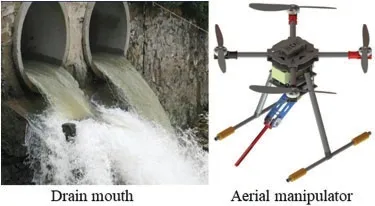
Figure 1:Virtual prototype of cable-driven aerial manipulator used for water sampling
To minimize the mass of manipulator,we employ cable drive technology (as shown in Fig.2),which allows the two drive motors to be housed within the pod.Meanwhile,with the exception of critical components such as the joint shaft and linkages,all other components are made of 3D printed lightweight nylon,substantially lowering the arm’s mass.The designed cable-driven robot arm has a fully extended length of 515 mm and a moving part mass of 221 g,while the entire system weighs 2651 g.The mass ratio of the moving elements to the total mass of the system is only 0.083,which considerably reduces the influence of their coupling on the system’s control.Additionally,it should be highlighted that this research focuses exclusively on the dynamics of the cable-driven robotic arm and the controller architecture,excluding the investigation of aircraft dynamics and control.
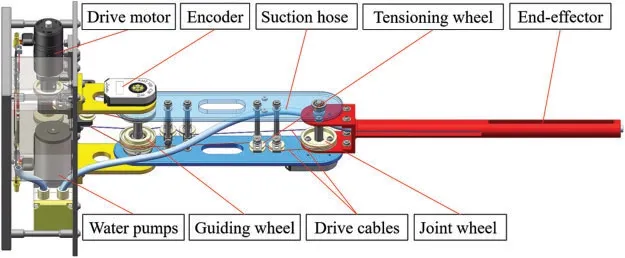
Figure 2:3D model of the cable-driven manipulator
2.2 Dynamical Modeling
When the cable-driven manipulator is in motion,the drive motor transmits the torque to the joint axis through the flexible cable.Obviously,the flexibility of the cable is mainly concentrated at the joint.So,the joint of the cable-driven manipulator can be treated as a flexible one and furtherly simplified to a linear spring for modelling and analyzing[39],as shown in Fig.3.Using the Lagrange-Euler method,we can derive the rigid-flexible coupling dynamics model of our designed cable-driven manipulator as follows:
whereMis the inertia matrix of links,Cis Coriolis and centrifugal matrix andGis the gravitational force vector.JandDdenote the inertia and damping matrix of motors individually.KsandKddenote the stiffness and damping matrices of joint.qandθrepresent the angular position vector of links and motors,individually.τextrepresents the disturbance torque vector,anduis the vector of motor torque which is also the output of controller.
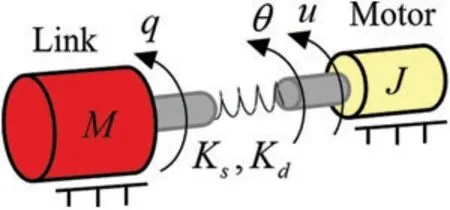
Figure 3:Simple model of flexible joint
Combining Eqs.(1)and(2),we can get the dynamics model of cable-driven manipulator which is driven directly by motors:
Actually,exact dynamics model of cable-driven manipulator is usually difficult to obtain.So,we adopt a diagonal gain matrixto estimate the dynamic properties of system and further rewrite the Eq.(3)as
whereNrepresents the lumped disturbances containing system uncertainties and external disturbances defined as
3.1 Design of LESO
As can be seen in Eq.(4),the lumped disturbanceNis so complex and nonlinear that it is difficult to obtain the accurate value using conventional methods.Hence,LESO is introduced in this section to estimate the lumped disturbanceN,and the actual system can be reduced to two second-order subsystems.For simplicity,the design process of our control strategy in this article is deduced using the joint 1 subsystem as an example:
wherey1is the system output.
Rewrite the Eq.(6)into the form of state space equation:
wherex=[q1,q˙1]T,u=u1,y=y1f=−1and other matrices can be defined as
Supposing that the disturbanceN1is differentiable,it can be expanded to a new statex3.Then,rewrite Eq.(7)as follows:
Finally,the linear extended state observers for system(6)can be suggested as
whereis the system output,is the estimation ofare the estimation of system states.L=[β,β2,β3]T=[ξ1ωo,ξ2ωo,ξ3ωo]Tdenotes the observer gain matrix,ω0>0 is observer bandwidth.Selecting the appropriateξi(i=1,2,3)by the pole assignment[40]allows the observer to track each state variable in the system(6).
3.2 Design of AST-FONTSM
Taking joint 1 as an example to extrapolate the design process of our control scheme.Joint position tracking error and its first order derivative are defined ase1=q1r−,=−.For realizing high control accuracy and convergence speed in sliding phase,the following FONTSM surface is designed as
where 0 Definition 1[41].Theαth order Riemann-Liouville fractional derivative and integration of functionf(t)with respect totare given by where 0<α <1,t0is the terminal value,andΓ(α)=is the Euler’s Gamma function.For simplicity,Dαis used in this paper to denotet0Dαt. Taking the derivative of Eq.(9)and combining with Eq.(5)yields In order to further achieve high performance and strong robustness in the reaching phase,we adopt the AST method as follows: whereθ11,θ21(θ21> θ11),θ31,Δ1are constant parameters.As can be seen in (16),the adaptive law has two different speeds.The decreasing speed will increase fromθ11toθ21once the tracking performance is reasonably satisfying and the adaptive parameteris in design range.Therefore,the control performance can be maximized while the noise effect is suppressed. Finally,combining Eqs.(13)–(15),the control law of joint 1 can be given as Similarly,we can get the control law of joint 2 as follows: Figure 4:Structure of the proposed strategy Lemma 1[42].For a nonlinear system ˙x=f(x,u),suppose that there is a continuous functionV(x),coefficientsλ>0,0<μ<1,0<ω<∞such that where 0<δ0<1,V(x0)is the initial value ofV(x). Lemma 2[43].The fractional integration operatorsandwithR(c) >0 are bounded inLp(a,b),1≤p≤∞: For simplify,we also use the joint 1 to prove the convergence and stability of our designed strategy.Combining the above control law(18)with(6),the error dynamic equation can be obtained as follows: whereε1=is estimation error of LESO. Then,two steps are followed to demonstrate the stability. First,the Eq.(23) is rewritten and a new vectorx1=[x11,x21]T=[sig(s1)0.5μ1]Tis introduced so that the stability can be conveniently proved.And,the Eq.(23)can be given: Then,the Eq.(24)can be further expressed as Because of the first order derivative of LESO erroris bounded as≤ξ1,whereξ1is a positive constant(bounded proof ofcan be found in[44]).Hence,there is a bounded functionf11(e1,t)such that|f11(e1,t)|≤ξ1holds fort≥0.Then,the LESO errorcan be further expressed as Combining(25)and(26),a compact form can be obtained whereA(x11)is defined as Thus,we can conclude from the above analytical process that ifx1can converge in finite time,the FONTSM surfaces1will also be finite-time bounded. Second,the stability analysis of our controller is performed.The following Lyapunov function is chosen wherek1>0,η11,η21are some coefficients.In fact,the adaptive parametersandare determined byx1.So,the LyapunovV(x11,x21,,) can be rewritten asV(x1).Obviously,K1will be positive definite withk1>0.Then,the following inequality will hold forV0(x1) Remark 1.Note that the chosen Lyapunov functionV1is continuous while not locally Lipschitz because it cannot be differentiated atx1=0.As a result,it is unable to adopt the common second Lyapunov method here.Nevertheless,we can still use the Zubov’s theorem[45,46]which only requires the Lyapunov function is continuous to prove the convergence.Furthermore,where the derivative ofV1does not exist,the arguments given in[47]are used.The details on this issue can be found in[45]. Differentiating(29)and combing with(27): Combing with(17),the symmetric matrixP1can be given as Considering|x11|=|s1|1/2≤‖x1‖2≤and combing(31)and(35),we can have the following inequality: whereλ11= Substituting(36)into(32)yields Considering the inequality(a2+b2+c2)1/2≤|a|+|b|+|c|and the definition ofV(x1),(37)can be further given as where In fact,system statex1is composed of FONTSM variables1,so we can conclude thats1will converge into|s1|≤Φ in finite time.Furthermore,the finite-time boundness of the tracking errore1can be demonstrated as follows. Taking(13)into consideration,we have Eq.(39)can be rewritten into two forms as follows: Eq.(39) will remain the FONTSM form as (13) whena21−s1(Db21−1[sig(e1)c21])−1>0.Consequently,the system trajectory will converge persistently toward FONTSM(13)untilBased on Lemma 2 andp=∞,we have whereesssupf(x)denotes the essential maximum values of the functionf(x).For simplicity,|e1|c21maxis used in this paper to denoteesssup|e1|c21. Lastly,the overall system stability is demonstrated and the tracking errors will converge as (44)and(45)in finite-time. To demonstrate the effectiveness of our designed controller,we molded the cable-driven aerial manipulator in MATLAB/SIMSCAPE and performed two visualization simulations.In the following simulations,the quadrotor is hovering,as shown in Fig.5,and the cable-driven manipulator is controlled to track the given signals by different controllers.Considering the different disturbances faced by cable-driven aerial manipulator such as gust of wind,flexible deformation of cable,and mechanical vibration,various disturbances defined later are added into the simulation.Meanwhile,the conventional linear active disturbance rejection control(LADRC)[48]and the FNTSMC[49]are adopted to compare the control performance with our proposed one.The parameters of the three controllers were adjusted in SIMULINK and the final selected values are shown in Table 1. Figure 5:Visualization simulation in MATLAB/SIMSCAPE Table 1: The values of the controller’s parameters 1)Simulation 1:In the first simulation case,for validating the effectiveness of our control method,the cable-driven manipulator is controlled to track sinusoidal reference trajectories without payload.And a disturbanceτd=0.1 sin(2πt) Nm is adopted for the cable-driven manipulator.Finally,the obtained simulation outcomes are shown in Fig.6. Figure 6: (Continued) Figure 6: Compare results of simulation 1: (a) trajectory tracking of joints,(b) trajectory tracking errors,(c)control efforts The Figs.6a and 6b show the angular tracking of joints and the tracking errors among the three methods.As can be seen from the outcomes,all three methods can guarantee satisfied control performance under high nonlinearities and time-varying disturbances.Thanks to AST and FONTSM schemes,our proposed controller can achieve faster convergence speed and higher tracking accuracy than the other two.Fig.6c shows the comparison of control efforts,it is obvious that the FNTSMC exists chattering phenomenon.With the LESO compensation,the designed controller can minimize chattering and ensure smooth control torques.What’s more,the designed controller is model-free and can be easily applied in the practical application by utilizing the LESO scheme. 2) Simulation 2: In the second simulation,the cable-driven manipulator is controlled to track a signal designed by Cycloidal [50].Gaussian noise with an amplitude of 0.1 Nm is added and a 50 g payload is brought into the manipulator to test the robustness of our controller.The results are given in Fig.7. As shown in Fig.7,all the controllers can track the desired signal under noise and 50 g payload.Nevertheless,the control performance of our scheme is still the best among the three controllers,which greatly verifies its robustness.Additionally,our controller can still achieve smooth controller efforts which is beneficial to motors. Overall,the effectiveness and superiority of our method have clearly been proved through the above simulations.The proposed controller can converge quickly and track accurately due to AST and FONTSM schemes.Moreover,benefiting from LESO scheme,the control efforts of designed strategy are continued and nonsingular while without chattering. Figure 7: Compare results of simulation 2: (a) trajectory tracking of joints,(b) trajectory tracking errors,(c)control efforts For further validating the control performance of our designed controller practically,we performed ground experiments with a platform as shown in Fig.8.All drive motors and accompanying drivers are RoboMaster M2006 and RoboMaster C610,respectively.They are all placed in the base to minimize inertia during motion.The reduction ration,rated speed,and rated torque of the motor are 36:1,500 rpm and 1 Nm,respectively.The encoder installed at the joint is AMT102-V,and its resolution is 0.044°.Similarly,the LADRC and FNTSMC are adopted to compare with our scheme,and they are all executed byxPc system with a PCI6225e board.In the experiment,the reference trajectory of the two joints was set as a Cycloidal signal,and the sampling frequency was set to 1 kHz.The controller parameters are selected according to Table 1 and the experiment results are shown in Fig.9. Figure 8:Ground test platform Figure 9: (Continued) Figure 9:Compare results of experiment:(a)trajectory tracking of joints,(b)trajectory tracking errors,(c)control efforts As shown in Figs.9a and 9b,q1andq2can still effectively track the desired signal with three controllers in experiment.Meanwhile,our control methodology can achieve the best tracking performance.Nevertheless,there is a large tracking error at the joint reversal,which may be caused by the loosening and tightening of the cable when the joint is reversed.Furtherly,the root-mean-square-error(RMSE)and the Maximum error(MAE)are adopted to quantify the trajectory tracking errors of the two joints,as shown in Table 2.To specific,the RMSE of joint 1 decreases 42.9% and 58.8% when compared to the LADRC and FNTSMC,while the MAE reduces 55.6%and 72.8%.The RMSE of joint 2 decreases 37.9%and 50.8%while the MAE reduces 43.1%and 58.6%. Table 2: RMSE and MAE values of angular tracking error in experiment Finally,Fig.9c shows the control torque of the two joints.It is obvious that the torque of LADR and FNTSMC exist discontinuous control torque,which is mainly due to the existence of the flexibility of the cable.Nevertheless,LESO makes it possible to effectively estimate and compensate these disturbances,and the AST operator can also effectively suppress the chattering phenomenon.So,our proposed control manner offers smooth control effort with a significant elimination of the chattering phenomena. Generally speaking,the experiment outcomes are highly match with the above visualization simulation,verifying the effectiveness and comprehensive control performance of the controller we proposed. This article presents a novel robust controller for joint-space tracking control of a cable-driven aerial manipulator,which is used to realize remote sampling task at the drain mouth.Because of the adoption of the cable-driven scheme,all drive motors are installed at the manipulator base,which reduces energy consumption and dynamic coupling effect.Then,the proposed controller is developed from LESO and AST-FONTSMC.The AST-FONTSMC guarantees fast convergence and high accuracy while avoiding both singularity and chattering issues.What’s more,the utilization of LESO enhances the control performance of our designed strategy and makes it model-free.Next,the convergence and stability of our controller are proved through Lyapunov method.Lastly,the comparative simulations and experiments results between proposed controller and the other controllers,such as the LADRC and the FNTSMC,prove the superiority of the designed scheme in achieving comprehensive control performance under the lumped disturbances. In future works,the complex coupling effect between quadrotor and cable-driven manipulator will be further investigated and a hybrid control strategy for the cable-driven aerial manipulator will be designed.Additionally,actual water sampling tests will also be performed outdoors for verifying the effectiveness of designed strategy. Funding Statement: This work has been supported by the National Natural Science Foundation of China (52005231,52175097) and Social Development Science and Technology Support Project of Changzhou(CE20215050). Conflicts of Interest:The authors declare that they have no conflicts of interest to report regarding the present study.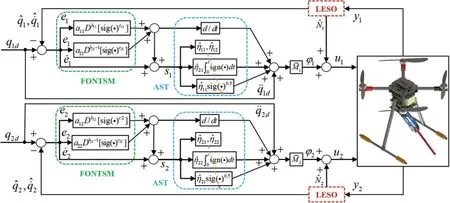
5.1 Setup


5.2 Results

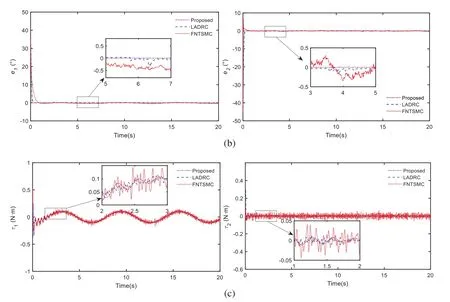

6.1 Setup

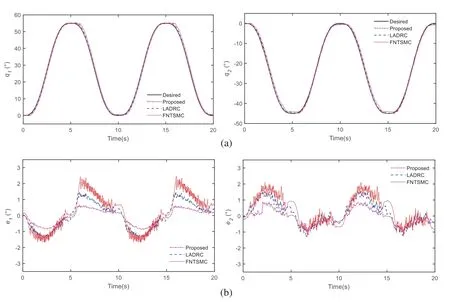

6.2 Results

猜你喜欢
- 2024-01-20 有关于第五次全国经济普查统计重点业务综合培训大会上讲话(完整文档)
- 2024-01-20 “严纪律、转作风、保安全、树形象”专题学习教育活动通知(完整文档)
- 2024-01-20 2024XX区住房城乡建设工作情况汇报
- 2024-01-20 2024高校思政教育交流材料:善用反腐败斗争这堂“大思政课”(精选文档)
- 2024-01-20 2024年主题教育专题党课辅导报告,(4)
- 2024-01-20 关于赴某地学习考察地方立法工作情况报告(范文推荐)
- 2024-01-20 2024年度关于增强党建带团建工作实效对策与建议(精选文档)
- 2024-01-20 教师演讲稿:春风化雨育桃李,,潜心耕耘满芬芳(全文)
- 2024-01-20 主题教育第二阶段来了
- 2024-01-20 2024年度关于到信访局实践锻炼个人总结【完整版】
- 搜索
-
- 打赌输了任人处理作文1000字7篇 05-12
- 当代大学生在全面建设社会主义现代化强 05-12
- 全面建成社会主义现代化强国的战略安排 03-10
- 个人廉洁自律方面存在的问题及整改措施 05-12
- 谈谈青年大学生在中国式现代化征程上的 05-12
- 2022年党支部第一议题会议记录(全文完 11-02
- 作为青年大学生如何肩负时代责任6篇 05-12
- 村党组织建设现状及工作亮点存在问题与 05-12
- 全面从严治党,自我革命重要论述研讨会 05-12
- 产业工人队伍建设改革(全文完整) 10-31
- 11-25国庆70周年庆典晚会 庆典晚会串词
- 11-25办公室礼仪的十大原则 浅谈办公室的电话礼仪
- 01-17用心灵轻轻地歌唱_心灵的歌唱
- 01-17也许你不是我一生的唯一|也许不是我
- 01-17爱了,请珍惜;不爱,趁早放手|爱就珍惜不爱就放手
- 01-17岁月带走的是记忆,但回忆会越来越清晰|有趣又有深意的句子
- 01-17曾经的美好只是曾经,我只想珍惜身边的人|我只想珍惜你
- 01-18从容不惊 [学会笑眼去看世界,不惊不乍,淡定从容]
- 02-03当代大学生学习态度调查报告
- 02-03常用护患英语会话
- 标签列表
